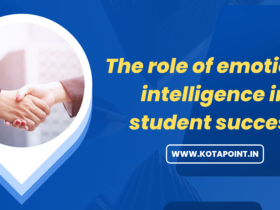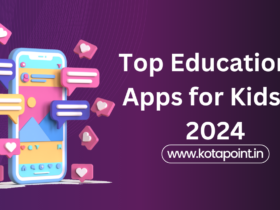Virtual Reality (VR) is revolutionizing many sectors, and education is no exception. The integration of VR in education is rapidly transforming how students learn, making the process more engaging, immersive, and effective. As we look into the future, Virtual Reality in education is expected to become even more prevalent, shaping the educational landscape for both students and teachers. This blog explores the future trends of VR in education, how it’s currently being used, and what we can expect in the years to come.

What is Virtual Reality (VR) in Education?
Virtual Reality (VR) in education refers to the use of immersive technologies to create simulated environments where learners can engage in realistic, interactive experiences. This can range from virtual field trips to historical landmarks, interactive science experiments, or even language immersion in a foreign culture. With VR in education, students can gain hands-on experience in a safe and controlled environment, enhancing their understanding and retention of information.
Current Use of Virtual Reality in Education
The use of Virtual Reality (VR) in education is already making a significant impact. Schools and universities around the world are incorporating VR into their curriculums. For example, students can explore the human body in a virtual anatomy class or travel back in time to witness historical events. VR in education is also helping students with special needs by providing customized learning environments that cater to their unique requirements.
Some popular VR education platforms include Google Expeditions, Nearpod, and ClassVR, which allow teachers to create immersive lessons and field trips. The ability of VR to create a more engaging and interactive learning experience is one of the key reasons why Virtual Reality in education is becoming increasingly popular.
Future Trends of Virtual Reality (VR) in Education
The future of Virtual Reality (VR) in education is bright, with several emerging trends set to shape how we teach and learn. Here are some of the most exciting trends to watch out for:
1. More Affordable VR Devices
One of the main challenges of incorporating VR in education has been the cost of the equipment. However, with the advancement of technology, VR headsets and other devices are becoming more affordable. This trend will likely continue, making Virtual Reality in education accessible to more schools and institutions around the world.
2. Immersive Virtual Classrooms
As remote learning becomes more common, VR is expected to play a vital role in creating virtual classrooms. Students will be able to attend lessons in fully immersive environments, interact with their peers and teachers, and engage in hands-on learning, regardless of their physical location. The trend of VR in education could revolutionize distance learning, bringing virtual classrooms to life.
3. VR-Enhanced STEM Education
Virtual Reality in education is set to make a significant impact on STEM (Science, Technology, Engineering, and Mathematics) subjects. VR simulations can help students understand complex scientific concepts by allowing them to experiment in virtual labs, visualize mathematical problems, or explore engineering designs. This hands-on approach to learning will be a game-changer for STEM education.
4. Customized Learning Experiences
In the future, VR in education will offer even more personalized learning experiences. Teachers will be able to tailor lessons to individual students’ needs, ensuring that each learner receives the right level of challenge and support. Virtual Reality in education will allow for adaptive learning environments that can adjust in real time based on students’ progress and understanding.
5. Collaborative Learning in VR
As VR technology continues to evolve, we can expect more collaborative learning experiences in virtual environments. Students will be able to work together on projects in shared virtual spaces, regardless of where they are in the world. This trend of collaborative learning through VR in education will promote teamwork, communication skills, and a sense of community among students.
6. Virtual Reality in Vocational Training
Another future trend of Virtual Reality in education is its growing use in vocational training. Students can practice real-world skills in a safe virtual environment, whether it’s performing medical procedures, operating machinery, or managing complex tasks. VR will bridge the gap between theoretical learning and practical experience, making it a valuable tool for vocational education.
Benefits of Virtual Reality in Education
The use of Virtual Reality (VR) in education brings numerous benefits:
- Enhanced Engagement: VR in education makes learning more exciting and engaging, capturing students’ attention and interest.
- Better Retention: The immersive nature of Virtual Reality in education helps students retain information better by allowing them to experience concepts rather than just reading or hearing about them.
- Hands-On Learning: VR allows for interactive, hands-on learning, which is particularly beneficial in subjects that require experimentation or practice.
- Accessibility: Virtual Reality in education makes it possible for students to explore environments and scenarios that may not be possible in real life, such as visiting distant planets or ancient civilizations.
Conclusion
Virtual Reality in education is set to become a cornerstone of modern teaching and learning. As technology advances, the use of VR in education will continue to grow, providing students with immersive and interactive learning experiences that were once unimaginable. The future trends of Virtual Reality in education point to a more personalized, engaging, and collaborative educational landscape that will benefit learners of all ages.
FAQs
What is Virtual Reality in education?
Virtual Reality in education is the use of immersive, computer-generated environments to enhance learning by allowing students to engage in realistic, interactive experiences.
How is Virtual Reality used in education today?
Virtual Reality is currently being used in education for virtual field trips, interactive science experiments, language immersion, and more. It is also helping students with special needs by providing customized learning environments.
What are the future trends of Virtual Reality in education?
Future trends of VR in education include more affordable VR devices, immersive virtual classrooms, VR-enhanced STEM education, customized learning experiences, collaborative learning in VR, and vocational training using VR.
What are the benefits of using Virtual Reality in education?
Benefits of VR in education include enhanced engagement, better retention, hands-on learning opportunities, and accessibility to otherwise impossible learning environments.
















Leave a Reply